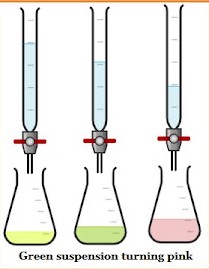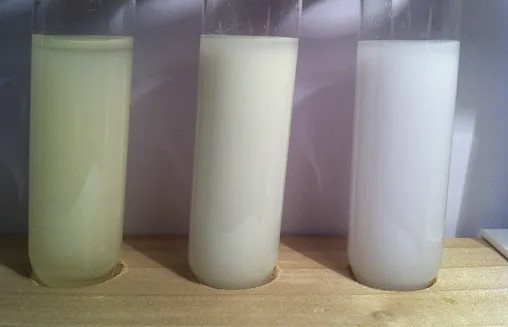Titration methods in analytical chemistry are indispensable for determining the concentration of an unknown substance in a solution. Among these, the Mohr, Volhard, and Fajans methods stand out due to their unique approaches and specific applications. Each technique utilizes different principles and indicators to achieve precise and accurate results, making them crucial tools in the chemist’s arsenal.
The difference between the Mohr, Volhard, and Fajans methods lies in their operating principles and the types of reactions they monitor. Mohr’s method is based on the precipitation of silver chloride upon the addition of silver nitrate to a chloride solution, using chromate ions as an indicator. Volhard’s approach, however, involves a back titration of excess silver nitrate with ammonium thiocyanate, using ferric ions as the indicator. Fajans’ method employs the adsorption of indicator ions to the precipitate formed during titration, highlighting the endpoint of the reaction.
Each method has been developed to cater to specific analytical needs. Mohr’s method is renowned for its simplicity and direct approach to chloride ion quantification. Volhard’s technique offers versatility in analyzing halides and cyanides, even in mixtures where direct titration is not feasible. Meanwhile, Fajans’ method provides a unique advantage in scenarios where slight changes in the charge distribution at the surface of precipitates indicate the endpoint. Understanding these differences enables chemists to select the most appropriate technique for their analytical requirements, ensuring the reliability and accuracy of their results.

Core Principles
Titration Basics
Definition and Applications
Titration is a laboratory technique used to determine the concentration of an unknown substance in a solution. It involves the gradual addition of a titrant (a solution of known concentration) to a solution containing the analyte (the substance whose concentration is unknown) until the reaction between them is complete. This process finds applications in various fields such as pharmaceuticals, environmental science, and food industry, where accurate measurement of substance concentration is crucial.
Key Components
- Titrant: The solution of known concentration added to the analyte.
- Analyte: The substance whose concentration we wish to determine.
- Indicator: A chemical that changes color at (or near) the endpoint of the titration.
Analytical Significance
Titration plays a pivotal role in quantitative analysis, where precision and accuracy are paramount. It enables chemists to:
- Determine the concentration of an unknown solution accurately.
- Understand the purity of substances.
- Analyze the stoichiometry of reactions in a solution.
Mohr Method
Overview
The Mohr method, named after the German chemist Karl Friedrich Mohr, is a classic approach in analytical chemistry for determining the concentration of chloride ions in a solution.
Historical Context
Karl Friedrich Mohr made significant contributions to titration, a technique that has evolved over the years but still retains the principles he laid out in the 19th century. His method for analyzing chloride ions stands out for its simplicity and effectiveness.
Principle and Procedure
The Mohr method uses silver nitrate as the titrant, which reacts with chloride ions in the sample to form a white precipitate of silver chloride. The endpoint of the titration is identified by the addition of potassium chromate as an indicator, which forms a reddish-brown precipitate of silver chromate, indicating that all chloride ions have reacted.
Key Features
- Silver Nitrate as Titrant: Reacts with chloride ions to form a precipitate.
- Chloride Ion Analysis: Specifically tailored for chloride ion quantification.
- Endpoint Detection with Chromate Ions: Potassium chromate serves as an indicator, changing color at the endpoint.
Applications
- Salinity Measurement: Essential in studying water quality and oceanography.
- Water and Wastewater Analysis: Used to assess chloride content in environmental samples.
Volhard Method
Overview
Developed by the German chemist Jacob Volhard, the Volhard method is another pivotal technique in analytical chemistry, particularly useful for the titration of silver ions with a known concentration of ammonium thiocyanate.
Historical Background
Jacob Volhard’s innovation in titration methods expanded the possibilities of quantitative analysis by introducing a robust technique for the back titration of ions in complex mixtures.
Principle and Methodology
The Volhard method is a back titration technique. Initially, an excess of silver nitrate is added to the analyte solution containing halides. The unreacted silver ions are then titrated with ammonium thiocyanate using ferric ions as an indicator. The endpoint is marked by the formation of a reddish-brown ferric thiocyanate, indicating the completion of the reaction.
Key Features
- Precipitation Titration: Relies on the formation of a precipitate during the titration process.
- Use of Silver Nitrate and Ammonium Thiocyanate: These reagents are central to the Volhard method.
- Indicator: Ferric Ion: Changes color at the endpoint, signaling the end of the titration.
Applications
- Analysis of Halides: Effective in determining the concentration of halide ions in a solution.
- Determining Cyanide Concentration: Useful in industries and laboratories for analyzing cyanide levels in samples.
Fajans Method
Overview
The Fajans method marks a significant departure from the traditional titration techniques, introducing a unique approach known as adsorption titration. This method, developed by Kazimierz Fajans in the early 20th century, relies on the principle of adsorption to determine the endpoint of a titration, offering a novel perspective in analytical chemistry.
Introduction to Adsorption Titration
Adsorption titration is based on the concept that ions in a solution can adhere to the surface of solid particles. The Fajans method utilizes this phenomenon, focusing on the adsorption of charged indicator ions onto the surface of precipitate particles formed during the titration.
Fajans Method Principle
The essence of the Fajans method is the change in charge on the surface of the precipitate, which attracts indicator ions that signal the titration’s endpoint. This method is particularly effective for reactions where the formation of a precipitate indicates the completion of the titration.
Key Features
- Use of Indicators for Endpoint Detection: Indicators in the Fajans method change color when they adsorb onto the precipitate, marking the titration’s endpoint.
- Role of Adsorption in Endpoint Determination: The method’s accuracy hinges on the precise detection of when the surface charge of the precipitate changes, attracting the indicator ions.
Applications
- Determining Halide Ions in Solution: The Fajans method is adept at analyzing halides by precipitating them with a suitable counterion and detecting the endpoint with adsorbed indicators.
- Pharmaceutical Applications: Its precision makes it valuable for pharmaceutical analyses, where accurate dosing is critical.
Comparative Analysis
Accuracy and Precision
Comparison of the Three Methods
The Mohr, Volhard, and Fajans methods each offer unique advantages in terms of accuracy and precision. The Mohr method is straightforward but can be susceptible to errors if the endpoint is not clearly visible. The Volhard method, being a back titration, can be more precise in complex samples. The Fajans method, relying on adsorption, offers precision through visual changes on the precipitate’s surface.
Factors Influencing Accuracy
Several factors influence the accuracy of these titration methods, including:
- Purity of Reagents: Ensuring that chemicals are pure is essential for accurate titrations.
- Indicator Choice: Selecting the correct indicator for the specific reaction is crucial.
- Endpoint Determination: Precisely identifying the endpoint affects the titration’s accuracy.
Sensitivity and Specificity
Analytical Sensitivity of Each Method
Each method’s sensitivity varies depending on the analyte and the reaction conditions. The Fajans method is highly sensitive to surface charge changes, making it excellent for detecting slight endpoint shifts. The Mohr method’s sensitivity can be affected by the solution’s clarity, while the Volhard method’s back titration approach enhances its sensitivity in complex matrices.
Selectivity for Ions or Compounds
The selectivity of a titration method is crucial for its application to specific analytes. The Mohr method is highly selective for chloride ions, the Volhard method for anions that form precipitates with silver nitrate, and the Fajans method is versatile, with selectivity depending on the precipitate and indicator used.
Ease of Use
Practical Considerations
Each method has its practical considerations, such as:
- Visibility of the Endpoint: Some endpoints are easier to observe than others.
- Sample Preparation: The complexity of preparing samples can vary.
Required Equipment and Chemicals
The equipment and chemicals required for these methods are generally standard in a chemistry lab, but the choice of indicators and titrants can differ significantly, affecting the ease of use and accessibility of each method.
Applications
Suitability for Different Analytical Needs
Choosing the right method depends on the specific analytical needs, such as the type of ion being analyzed, the desired precision, and the sample matrix. Each method has areas where it excels, making it more suitable for certain analyses.
Choosing the Right Method
Factors to Consider
When selecting a titration method, consider the following:
- Nature of Analyte: The chemical properties of the analyte dictate the most suitable method.
- Required Precision and Sensitivity: Depending on the analysis’s required accuracy, one method may be preferred over others.
- Available Resources: Equipment, reagents, and expertise available can influence the choice of method.
Recommendations
To choose the most appropriate method:
- Evaluate the specific requirements of the analysis.
- Consider the advantages and limitations of each method.
- Test the method in the specific application to ensure it meets the needs.
Frequently Asked Questions
What is a titration method?
Titration is a laboratory technique used in analytical chemistry to determine the concentration of an unknown solute in a solution. It involves the gradual addition of a titrant of known concentration to a solution containing the analyte until the reaction reaches its endpoint, which is usually indicated by a color change.
How do indicators work in titration methods?
Indicators in titration methods are substances that change color at or near the endpoint of a titration. Their function is to provide a visual cue that the reaction has reached a point where the amount of titrant equals the amount of substance being titrated. Different titrations require different indicators due to the varying nature of their reactions.
Can Mohr’s method be used for all types of samples?
Mohr’s method is best suited for the analysis of chloride ions in neutral or slightly alkaline solutions. It is not appropriate for highly acidic solutions, as the formation of silver chloride precipitate is hindered. The method’s applicability depends on the sample’s composition and pH.
Why is the Volhard method considered versatile?
The Volhard method is versatile because it allows for the determination of a wide range of anions by back titration. It is especially useful in complex matrices or when the direct titration endpoint is difficult to discern. This adaptability makes it suitable for various industrial and research applications.
How does the Fajans method differ from other titration methods?
The Fajans method differs from other titration methods in its use of adsorption indicators. Instead of relying on a change in solution color, it detects the endpoint by observing a change on the precipitate’s surface. This unique approach is particularly useful for precipitate reactions where traditional indicators are ineffective.
Conclusion
The Mohr, Volhard, and Fajans methods each offer distinct advantages for the quantification of ions in solution, underlining the diversity and adaptability of titration techniques in analytical chemistry. Their differences are not just technicalities but are foundational to the accurate and efficient determination of substance concentrations in various contexts. Understanding these distinctions is crucial for chemists and researchers to employ the right method for their specific analytical challenges.
In choosing between the Mohr, Volhard, and Fajans methods, one must consider the nature of the sample, the required precision, and the specific ions being analyzed. This decision impacts not only the accuracy of the results but also the efficiency of the analytical process. As the field of chemistry continues to evolve, the knowledge and application of these titration methods will remain a cornerstone of quantitative analysis, reflecting the ongoing pursuit of precision and reliability in scientific research.

